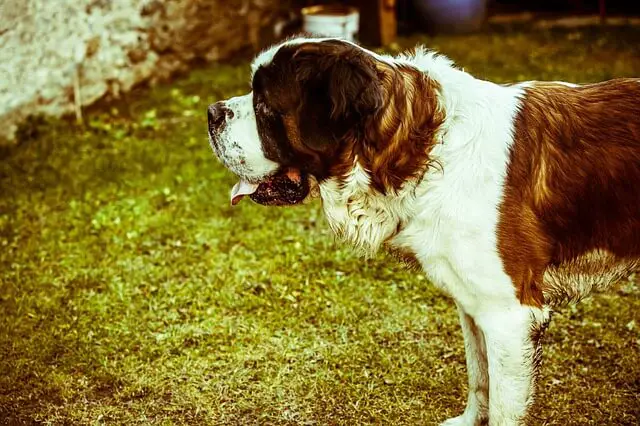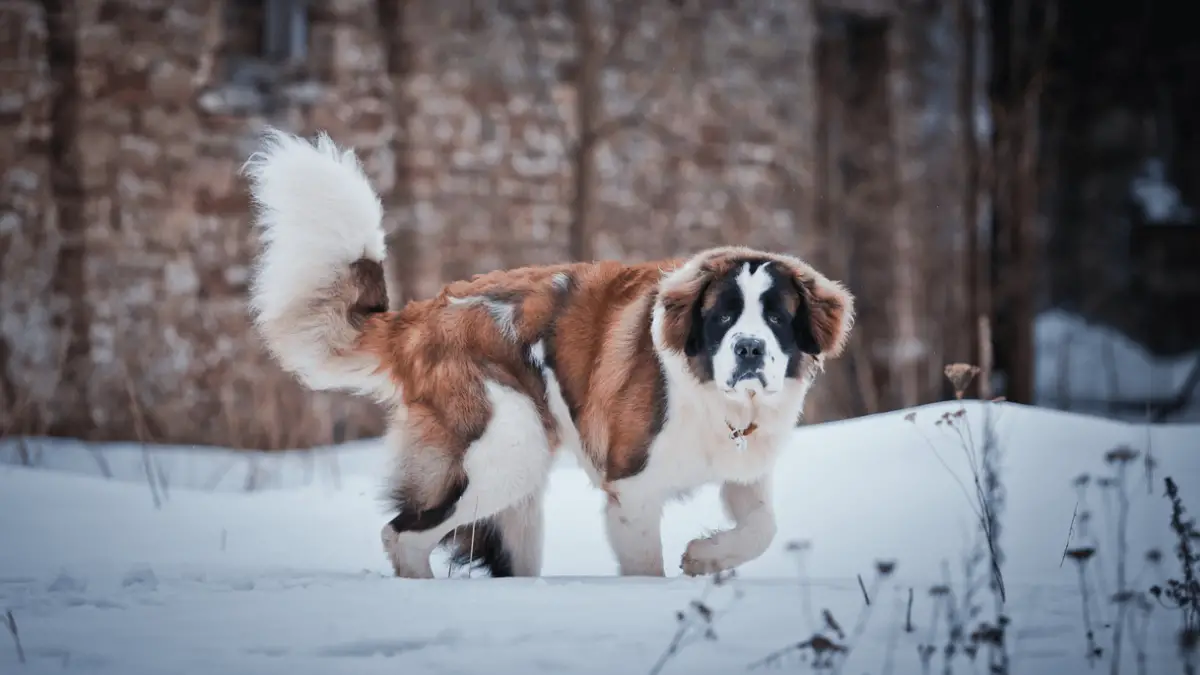5 Little Known Facts About Saint Bernard Dogs
29.10.2021.
If you love big fluffy dogs, you probably love Saint Bernards. These charming dogs were even brought to life on the big screen with the movie called “Beethoven.” These dogs are pretty impressive, so we decided to put together a list of our favorite Saint Bernard fun facts.
1. Saint Bernards didn’t really carry brandy
One of the most popular myths and beliefs surrounding these dogs is that they carry a small barrel around their necks filled with brandy. It is believed these dogs would offer weary travelers a way to quickly warm themselves up with brandy. However, Saint Bernards never actually wore barrels with brandy.
These dogs carried supplies, so the people they saved had some nourishment. The barrel-carrying dog was actually depicted by Edwin Landseer. He was 17 at the time of his first painting, including these dogs. His painting, Alpine Mastiffs Reanimating a Distressed Traveler, depicts two Saint Bernards helping an injured man. One dog is barking for attention, and the other is trying to revive the man with brandy. Later, the famous painter stated the dog in the picture carries brandy.

2. 2.000-year-old breed
The exact origins of Saint Bernards are not entirely uncovered. However, most scientists believe these dogs come from ancient Molossian dogs. Molossian dogs are the ancestors of all Mastiff-type modern-day dogs, so it is not really surprising these giants come from those impressive lines.
It is believed the Romans brought their dogs with them while they were conquering Europe. In modern-day Switzerland, Roman dogs encountered local mountain dogs. As you can imagine, they crossbred, and the first lines of Saint Bernards were started. Since Roman dogs were pretty large and powerful, it is no wonder modern Saint Bernards are giants as well.

3. Monks brought them to the Saint Bernard pass
The exact history of these dogs is, unfortunately, unknown. A massive fire in the 16th century destroyed historical writing, and precise details of Saint Bernard’s arrival will most likely forever remain a mystery. However, thanks to some historians, some details of these dogs’ history were recovered.
Historical texts from other parts of Europe were recovered, and scientists can place these dogs’ arrival between 1660 and 1670. They were brought to the Swiss Saint Bernard pass nearly 500 years after the monk Bernard started clearing the pass. The monk even opened the famous Saint Bernard hospice where travelers could regain their strength and relax.
4. Monks tried perfecting Saint Bernards
If you love this breed, you probably don’t think there is anything to improve. However, one rather significant inconvenience made 18th-century rescue Saint Bernard’s life miserable. They had short, thick coats. Their original coats didn’t keep them too warm in the Swiss Alps.

The monks at the Saint Bernard hospice noticed these dogs were struggling with the cold, so they decided to do something about it. They brought Newfoundlands and crossbred them with Saint Bernards from surrounding villages. They created the longhaired Saint Bernard version with thicker coats to keep them warm and protected from the mountain cold. However, the longer coat started catching snow and ice, and the plan ultimately backfired
5. The most successful rescuer
While the part about carrying a barrel full of brandy is not entirely true, the search and rescue part is. These dogs were used to save travelers in the Saint Bernard Pass. They are powerful, determined, and have great instincts. All Saint Bernards have natural protective instincts, but none can come close to a Saint Bernard called Barry.
Many legends and myths surround Barry, and some are pretty unbelievable. For example, one story says he saved a frozen 12-year-old boy by keeping him warm with his body. However, those stories are not exactly true. Nevertheless, Barry was a search and rescue dog in the Saint Bernard pass. He apparently saved more than 40 people in the mountains.
World Dog Finder team







Share